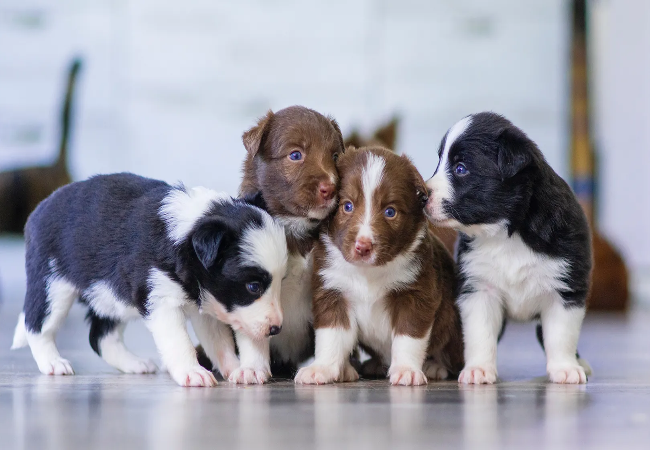Vet Guide 2025 Puppy Socialization Build Confidence & Bond 🐶🩺

In this article
Vet Guide 2025 Puppy Socialization Build Confidence & Bond 🐶🩺
By Dr. Duncan Houston BVSc
Bringing home a new puppy? The socialization window between 3–14 weeks is the most important time to shape a happy, confident adult dog. I’m Dr Duncan Houston BVSc, and in this thorough guide, you'll learn when to start, what experiences to include, how to do it safely—and how to handle setbacks. With expert tele‑support from Ask A Vet, you'll have everything you need for strong puppy development. 🎉
1. Why Socialization Matters 🧠
Socialization means exposing your puppy to the people, dogs, environments, sounds, textures and experiences they’ll face as adults. Think of it like a vaccine: safe exposure teaches their brain that these things are “normal” and not scary.
Poor socialization is linked to fear, anxiety, shy behaviors, and aggression. The AVSAB and experts confirm unreliable experiences during the critical period can lead to emotional fragility into adulthood.
2. Key Time Frame: Sensitive Social Window ⏳
- 3–14 weeks old: Ideal window for positive imprinting.
- 8–12 weeks: Most puppies paired with breeders begin gentle exposure to people, sounds, car rides.
- Up to 16 weeks: Still safe to socialize carefully, especially with vaccinated playmates.
3. Socialization Checklist: What to Introduce 📝
Expose gradually, keeping every experience positive:
- People: Different ages, heights, ethnicities, physical abilities, clothing—including hats, sunglasses, coats.
- Canines: Calm, vaccinated puppies or gentle adult dogs. Ideal: small groups or low-volume puppy classes.
- Environments: Various surfaces—grass, sidewalk, gravel, carpet, metal grates—and indoor/outdoor venues .
- Noises: Household appliances, traffic, music, children, crowds—start quiet and build up.
- Objects: Wheelchairs, bikes, umbrellas, strollers, carts, leashes, toys—mix novelty with rewards.
4. Practical Socialization Routine
- 🌄 Take short walks daily on different times/routes—include early evening to introduce varied lighting.
- 🏡 Invite vaccinated, puppy‑friendly guests for calm interactions at home or in yard.
- 🎧 Play soundtracks of household noises during playtime—sync action with treats.
- 📚 Attend puppy classes twice weekly until 6 months—boost social exposure, bonding, and basic training.
- 🚗 Bring pup along to errands—car rides, outdoor shops, patios—carried between encounters.
5. Read Body Language & Keep It Positive
Watch for signs of stress and respond:
- Positive signs: relaxed body, wagging tail, play bow, sniffing.
- Adverse signs: lip lick, yawning, crouch, tucked tail, turning away—remove or calm.
Quality matters more than quantity—avoid overwhelming the puppy; stop before fear sets in.
6. Progressive Exposure Stages
- At home: Explore surfaces and household sounds.
- Yard/public carried: Let them observe from a safe distance.
- Parallel walks: With other calm dogs 15‑20 ft away
- Up-close sniffing: Brief controlled introductions with rewards
- Group classes/playdates: Short, supervised, small-group play
- Ongoing life events: Continue exposure into adolescence to solidify confidence.
7. Overcoming Challenges
- Fearful puppy: Back off, pair treats with distance, repeat steps slowly.
- Noisy environments: Limit exposure time and focus on positive distractions.
- Avoid dog parks: Especially during early phases—risky & overwhelming.
- Missed window? Still socialize! It may take longer but is worthwhile.
8. Tools for Success: Ask A Vet
- Ask A Vet App: Send photos/videos if you need help interpreting puppy reactions or adjusting routines.
9. Sample Weekly Schedule
| Day | Morning | Afternoon/Evening | Activity Focus |
|---|---|---|---|
| Mon | Neighborhood walk | Home sound play + treats | Surfaces + noise |
| Tue | Yard playdate | Puppy class | Dog interaction & training |
| Wed | Errand ride | Parallel walk near dogs | Environments + social exposure |
| Thu | Backyard handling early | Feeding & gentle infant meeting | People & handling |
| Fri | Home agility setup | Carried sidewalk walk | Confident movement |
| Sat | Visit vaccinated adult dog friend | Play and praise | Dog-to-dog interaction |
| Sun | Park visit from blanket | Family visitor meet | People & public spaces |
10. FAQs 🧠
- Q: When is it safe to go to dog parks?
- A: Only after full vaccination (≈16 weeks), confident social skills, and always with supervision.
- Q: My pup is shy with children—what to do?
- Start with quiet, calm children, rewarding calm behavior. Increase gradually—remove puppy if anxious.
- Q: Can I socialize too much?
- Yes—avoid overstimulation. Short positive sessions are better than marathon outings.
Conclusion
Socialization during early puppyhood shapes a confident, happy, adaptable dog. The investment pays off: better behavior, deeper bond, and more enjoyable companionship. Stay positive, and expert support from Ask A Vet. Enjoy the journey of puppyhood! 🐶❤️






